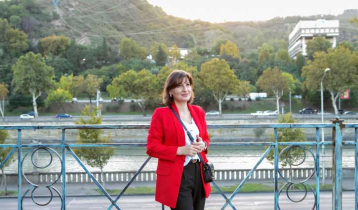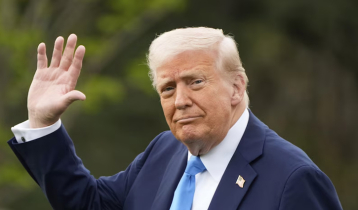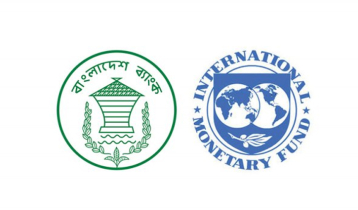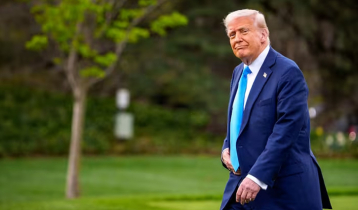‘Every child is artist; problem is how to remain artist one we grow up’
Barrister M. Anamul Kabir Emon || risingbd.com

Art has perennial history, which organized more than thousand years ago. Art is one of the building tools of civilization; no significant cultural or society has ever flourished without it. The history of art stretches back more than 30,000 years. Throughout the history artist works have been taken on many forms and served many purposes and they have constantly evolved in the process of distinct nation’s culture. Surrender before upon Gods and after dead life motivated much early art and provided many of its subjects. The ancient Egyptians, for example, decorated tombs and papyrus texts with pictures of their Gods in the hope that these images would protect them from evil and guide them on their journeys to the afterlife for example.
In Chinese the famous Terracotta Army, discover in 1974 in Shaanxi province was created in the late 3rd century BCE and buried with first emperor, Qin Shi Huang, to keep him safe after death.
The ruler of the Han dynasty suit “Jade” was used to completely encase the corpse to reflect the belief that the body would not decay if encase in “Jade”.
Religious expressions varied enormously between different cultures and also change over time which them. In the East for example early artist avoided representing the Buddha in human form, but instead use symbols that indicated his presence such as his foot print, stupas and the Tharma wheel.
In the 1st Century CE anthropomorphic sculptures of the Buddha began to appears in northern India, inspire by Greek culture and spread Eastward with the army of Alexdendar Great.
In the period of classical Greek art portrayed gods and heroes as idealized figures, placing perfect perception at the heart of its aesthetic philosophy. Christian Church borrowed heavily from this classical tradition with the object to served primarily to convey religious truths through symbolic conventions and so to educate the faithful, who were almost entirely illiterate. In late medieval period in early15th century the mathematical principles of perspective had been developed and western painters gradually produced ever more realistic images of sacred events and more convincing with more architectural and natural. Art in Islamic followed the different path, in which religious art largely avoided depiction of human form, but adopted calligraphy to represent the divine word, and employed geometric and plant- like motifs as decoration.
The European renaissance or literally “rebirth” heralded an age of exploration involve a though of scientific explanation and artistic expression inspired a classical value and of rationality and beauty. Before that the artist has been treated as a craftsman rather and intellectuals.
In medieval contract it was not unusual for patrons to stipulate the exact amounts of costly materials to be used in a specific painting or sculpture. Ultramarine was a case of paint for example- the Cloak of the Virgin Mary.
Perhaps the first artist to be recognized as a creative genius in his lifetime was Michelangelo, following his painting his painting of ceiling in the Vatican’s Sistine Chapel in 1508-12. He and Leonardo da Vinic helped raise the profile of the artist in new levels. Social changes are often reflected by changes in artistic style for example the most influential patrons of Western art came either from the Church or from royal and aristocratic circles.
However, when the Dutch maritime empire began to flourish, it gave rise to a wealthy new mercantile class. Toward the end of 18th Century, artists some driven by revolutionary idealism began to express their personal experiences and preoccupations in their work, which remain the undermining the role of powerful patrons in art.
The canons of beauty and artistic worth are constantly changing, affected by the vagaries of time and fashion, shifts in attitudes, and the appearance of new technologies and materials. The deliberately foster the artistic "movement"; but often coalesce with around certain group of artists in a certain time and place. It has been impossible to foresee which artists or styles would find a place in history.
Value judgments usually stem from the cultural standpoint of the viewer. In the modern era, Russian critics would not prefer the Avant grade experiments in the West as profit-driven and elitist, preferring their own style of Socialist from and paintal to make art of the general peoples.
Day by day technological innovations are capable of stimulating the ideas in art woodblock prints had been made in China from the 3rd century CE. In 15th century the Renaissance ideas had been more develop and spread by the Johannes Gutenberg’s introduction of movable type.
The technology to print text and images provided a wealth of inspiration for artists, which greatly accelerated the transmission of new styles and techniques. In 1500s were the engravings of Marcantonio Raimondi prints helped to make Raphael the most celebrated artist of his time and indirectly had a wider impact on the course of art history of academic and giving the artists greater independence from their patrons.
In the 19th century, the photographic caused a panic among some artists, who predicted that it would bring about the end of painting. In fact, the reverse was true and the trend for experimentation gathered pace in the 20th century, as self-expression became the new watchword. They started work with non- traditional materials and techniques to help take their work into a new direction and gain different perspectives. In the words of Paul, Klee, "Art does not reproduce what we see; rather, it makes us see."
Recent coherent of digital world can tremor the style of individual societies and quality where they wanted to stand on. It's apparent from ancient arts sapiens had been protected them self from evil by the art work, which mostly essential for survival and day by day vagaries of time fashion and style and artistic worth are constantly changing and shifted its attitude by the appetence of new media and material. Technical or technologies as the name of medium or a material had been the greatest impact throughout the history of the art world. The earliest art may have been linked to belief the natural power of fertility, sun, worship, reverence from the dead, as a aid for hunting, sometime functional, mostly ritual role and tools, recently revolutionaries and better survival, which had been became an individual or societies culture. History of the last 30000 years of the art the technologies always interrupt to make new story and bewildering the artist, but failed to divert the art of its main breath. Art is a combination of emotion which dominant or power by sapiens’s roots, geographical weather and religious.
Islam is central to and dominant in Malay culture. A significant number of words in the Malay vocabulary can trace their origins to Arabic which is the common language of Islamic of Islamic prayer and final’s. Islam is so ingrained in Malay life that Islamic rituals are practiced as Malay Culture. Muslim and Malay are interchangeable in many daily contexts. However, while Islam is their religion the abandoned faiths leave a lasting impact still influenced their daily lives-cultures-socially. This can see in the festival or ceremony they held, the music they play that still have notes influential by their formal faith and the artist world they do.
While the influence remains, this over time and in-turn get influence by the culture Islam brings and the new Islamic culture are amalgamated and create what is inquily Malay and yet Islamic.
Art, music and dance from an essential part of the DNA of the people of Bangladesh. The language theme is one of the most important parts of our Bangali culture, its catalyzed the assertion of Bengali nationalism. Bangladesh has celebrated 50 years of independence in 2021, our art is arguably youngest of all countries of South Asia and strongest and most diverse credited to the largely secular nature of their social fabric day to day life our religious and cultural harmony one cannot disguises people based on their religious, or belief as we well speak the same language and dress. Indeed, we gave a strong trust and inclusiveness mentality has enabled the art and culture of to the thrive of Bangladesh.
Zainul Abedin (1914-1976) has been bestowed the illustrious title of Shilpacharya or literally “National Master of Art’. Mainly the art and culture of Bangladesh have built with the combination of Islamic, Hinduism and Buddhism culture. The archeological site of wary-Bateshwar indicates that the history of Bangladeshi art since 450 BC. Evidence of the earliest development of Bangladesh art refer to the Mauryan Age, which reflect the rich heritage of Mauryan Art. During the Pula rule from 750 to 1174 CE created a distinctive form of Buddhist are in Bangladesh which influenced the Chinese, Japanese, eastern Asian and Tibetan art. This progress of Bangladesh art continued to some extend during the Sena rule through this 11th and 12th centuries. Beginning of 11th century when the Muslims artist in Bangla, the art of Bangladesh witnesses the influences of Muslim art, which mostly flourished during the Mughal rule.

Acrylic Paint “46X25”, Artist: Barrister M. Anamul Kabir Emon “(Haor Life-1)”
Art is intended to be form of appreciation of beauty and expression of emotional power and culture, which serves as a template for expectations in social group. A work of art which did not begin in emotion is not an art. There should be a moral in every work of art, Art is the care instrument of the world civilizations and technology all the path enhance its aristocracy and worth, however recent hurt broken and symbolic protest of “Mangal Shobhajatra” make overall worried about our present and upcoming generations culture worth and credibility’s, which remained the Pabell O Picassa code “Every child is an artist; the problem is how to remain an artist one we grow up”. We have to thought heavily from our classical tradition with object to serve a Bengali’s aesthetic philosophy. Art became more realistic in late medieval period. In terms religions expression varied enormously between different cultures that apparent from every Muslims countries of the world that has individual cultural philosophy which amalgamated with religious culture and convey religions truths though symbolic conversation, Country like Turkey, Yemen , Dubai, Malaysia, Nigeria etc has been placing perfect profession of their aesthetic philosophy but it is hurt broken to say still a large number of Bangladesh people have failed endowing Begali Muslim since with genuine emotion .Our must have a divine political issue which contradict our emotions and failed the reverse true.
The citizen as well as the ruler of our country must have ethics to survive the culture from all political or individual society’s divine issues which contradict our roots. Sprits language movement in of 1952 and Triumph of 1971 of secular state later ruin by brutal killing of father of the nation and his families in 1975. The present government rule by honorable PM Sheikh Hasina has been trying their best to introduce the real history of Bangali, declared Boishakhi bonus in bangla new year and also engaged government’s administration follow-up all cultural festivals, however its not enough, still we have enough time to bring over our new generation in a board by appetence of “Bangali Musalman” with Bangalis aesthetic philosophy and human aristocracy and worth. In our parents should have aware of their children’s cultural activities and emotion. In our school Bangla Medium English Medium as well as Madrasha’s syllabus, we should introduce some essential cultural activities as well as presentable digital content, games etc by new startup company with government subsidies, which might a proses to own the spirit of Bengali culture for our new generation and adhere themselves about religious, roots and culture and its importance, which remain them artist.
Dhaka/Mukul






































